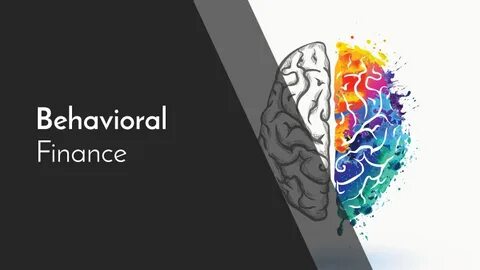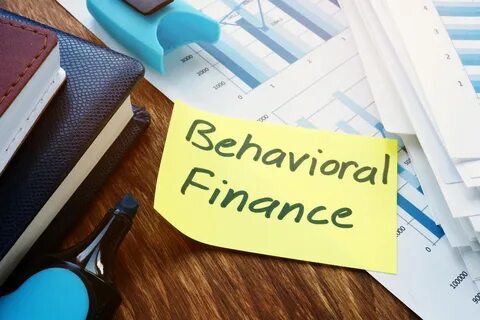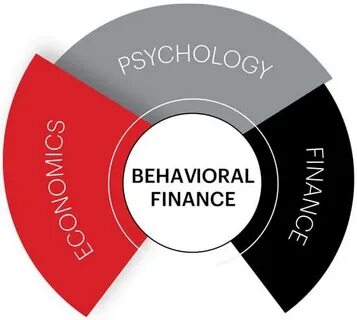
Outline:
1: Introduction
- Hook: The hidden war between your brain, your phone, and your wallet
- Definition of Behavioral Finance in the Age of Digital Distractions
- Preview of what this article covers
2: What Is Behavioral Finance in the Age of Digital Distractions?
- Behavioral Finance 101
- The Role of Cognitive Biases in Financial Decisions
- How Digital Distractions Magnify These Biases
3: The Psychology of Money: Why We Make Irrational Choices
- Fear of Missing Out (FOMO)
- Loss Aversion and Emotional Spending
- Anchoring and Price Perception Online
4: Technology’s Role in Shaping Financial Behavior
- Social Media, Notifications, and Impulse Buying
- FinTech Nudges vs. Manipulative Design
- Real-Time Payments and the Disappearing “Pain of Paying”
5: Top Cognitive Biases Affecting Your Financial Life
- Confirmation Bias
- Overconfidence Bias
- Recency Bias
- Herd Mentality Bias
- Status Quo Bias
6: How Digital Platforms Exploit These Biases
- Buy Now, Pay Later Schemes
- Gamified Trading Apps (e.g., Robinhood)
- Personalized Ads and Behavioral Tracking
7: Decision Fatigue in the Attention Economy
- The Psychology of Endless Choices
- How Decision Fatigue Leads to Poor Spending
- Solutions for Streamlining Financial Decisions
8: Case Study: How Bias + Tech = Bad Financial Moves
- A Young Investor in Crypto Traps
- The Rise of Meme Stocks and Emotional Herding
- Subscription Overload: Death by a Thousand Apps
9: Building Financial Resilience in a Distracted World
- How to Identify Your Own Biases
- Creating “Friction” to Resist Impulse
- Financial Mindfulness Techniques
10: Practical Tools to Overcome Cognitive Biases
- Budgeting Apps That Alert, Not Addict
- AI-Powered Spending Advisors
- Browser Extensions for Intentional Spending
11: The Role of Behavioral Economics in FinTech Design
- Good Nudges: Encouraging Saving & Investing
- Bad Nudges: Exploiting Instant Gratification
- Ethical Design in Finance Apps
12: Educating for Behavioral Awareness
- Schools Teaching Digital Finance Psychology
- Financial Literacy Platforms with a Behavioral Lens
- Podcasts and Books That Help You Think Better
13: The Intersection of Neuroscience, AI, and Finance
- How AI Learns Your Biases
- Can Neural Tracking Improve Spending Habits?
- Future of Brain-Tech in Personal Finance
14: Reprogramming Your Mind for Smarter Financial Decisions
- Journaling and Habit Tracking
- Setting Digital Boundaries
- Using Time-Delayed Financial Tools
14: Conclusion: Win the Inner War—Finance Smarter in a Distracted Age
- Recap of key points
- Call to action: Slow down, think intentionally, spend wisely
14: FAQs
- What is behavioral finance and why does it matter today?
- How do digital distractions impact personal finance decisions?
- What’s the most common cognitive bias affecting money?
- Can fintech tools help reduce financial bias?
- How do I train myself to make better financial decisions online?
Behavioral Finance in the Age of Digital Distractions: Unmasking the Costly Cognitive Biases Behind Your Financial Decisions
Introduction
Behavioral finance in the age of digital distractions is the silent war being waged in your mind every time you scroll, swipe, or click. Your brain is making split-second money decisions—many of them irrational—and technology is making it worse. If you’ve ever bought something you didn’t need, invested in a crypto fad, or signed up for a subscription you forgot, you’ve been a victim of this invisible battle.
In this post, we’ll explore how behavioral finance explains our irrational money habits, how digital distractions amplify them, and what you can do to take back control of your financial life. Trust us, it’s not just about budgeting—it’s about reprogramming your brain to resist the manipulative design of the digital world.
What Is Behavioral Finance in the Age of Digital Distractions?
Behavioral Finance 101
Behavioral finance is the study of psychology behind financial decision-making. It shows that people don’t always act rationally with money. Emotions, mental shortcuts (biases), and social influences can lead to poor financial choices.
The Role of Cognitive Biases in Financial Decisions
Cognitive biases are mental traps—like confirmation bias (seeking info that confirms what you already believe), overconfidence bias, and herd mentality—that distort decision-making. In finance, these biases lead to risky investments, impulse spending, and bad budgeting.
How Digital Distractions Magnify These Biases
Today’s digital platforms—Instagram, YouTube, TikTok, e-commerce sites—are engineered to keep you distracted. The more distracted you are, the more irrational your financial choices become. Notifications, endless scrolls, and targeted ads feed your biases in real time.
The Psychology of Money: Why We Make Irrational Choices
The psychology of money is not just about budgets, spreadsheets, or interest rates. It’s about how people feel, think, and behave with money. We often assume that financial success comes from knowledge, but it’s frequently driven by behavior—behavior that’s emotional, impulsive, and at times, irrational.
This is why two people with the same salary, background, and education can end up with drastically different financial outcomes. It’s not what you know. It’s how you behave.
This is why two people with the same salary, background, and education can end up with drastically different financial outcomes. It’s not what you know. It’s how you behave.
1. Emotions Over Logic: The Core of Irrational Spending
Money decisions are rarely purely rational.
People don’t spend based on what’s “best”—they spend based on what feels good right now.
- Retail therapy is a real phenomenon.
- Impulse buying thrives on temporary highs.
- Fear of missing out (FOMO) can cause financial regrets.
When emotions override logic, we justify unnecessary expenses—even when we know better.
2. The Role of Instant Gratification
The human brain is wired for short-term rewards, not long-term planning.
- Buying a new gadget feels rewarding now.
- Saving for retirement is abstract and distant.
This is why many people fail to invest, even when they know it’s important. Delayed gratification takes discipline, and discipline takes mental effort.
3. Mental Accounting: Money Isn’t Always Treated Equally
Behavioral economist Richard Thaler introduced the idea of mental accounting—the irrational way people treat money differently depending on where it came from.
For example:
- A $100 bonus feels like free money and is quickly spent.
- But $100 earned from hard work is often saved.
Logically, all money is equal. Emotionally, it isn’t.
4. Anchoring and Lifestyle Inflation
When people get used to a certain standard of living, it becomes hard to downgrade—even if it’s financially wise.
- A person who once earned $5,000/month but now earns $3,000 may still spend at the $5,000 level.
- This is anchoring—when past experiences lock in future expectations.
This is also tied to lifestyle inflation, where spending increases as income rises.
5. Herd Mentality: Everyone Is Doing It
Humans are social creatures. We copy others—especially with money.
- If friends are investing in crypto, you might too—even if you don’t understand it.
- If neighbors buy new cars, you feel pressure to upgrade yours.
This group behavior often leads to market bubbles, debt, or bad investments.
6. The Illusion of Control
Many people believe they are in more control of their financial outcomes than they actually are.
- They overestimate their investing skill.
- They believe past success guarantees future results.
- They try to time the market, despite research showing it rarely works.
This illusion leads to risk-taking that isn’t grounded in reality.
7. Loss Aversion: The Pain of Losing is Twice as Powerful
According to behavioral economics, losing $100 feels twice as painful as gaining $100 feels pleasurable. This fear of loss makes people:
- Avoid investing altogether.
- Sell assets prematurely during market dips.
- Miss out on long-term growth.
It’s irrational—but emotionally valid.
8. Overconfidence Bias: “This Won’t Happen to Me”
People often believe they are smarter than the average person—especially with money.
- They overestimate their budgeting skills.
- They assume they’ll always earn more in the future.
- They underestimate the risk of emergencies.
This overconfidence leads to under-saving and overspending.
9. The Endowment Effect: We Overvalue What We Own
Once people own something—be it a car, a house, or a stock—they tend to overvalue it emotionally.
Even if a stock is underperforming, investors may hold it out of attachment, ignoring clear sell signals.
This leads to poor portfolio performance and missed opportunities.
10. Financial Trauma and Childhood Programming
Our early experiences with money shape our financial beliefs for life.
- Children from financially unstable homes may develop scarcity mindsets.
- Those raised in wealth may underestimate the importance of budgeting.
Unless unpacked, these subconscious beliefs drive adult financial behavior—often irrationally.
11. The Danger of Comparison
“Keeping up with the Joneses” is one of the most destructive financial traps.
- Social media exaggerates others’ wealth.
- People compare incomes, houses, vacations.
- The result: stress, envy, and unnecessary debt.
Comparison is not only the thief of joy—it’s the thief of financial freedom.
12. Money and Identity: What You Spend Is Who You Are?
Many people link their self-worth to their net worth.
- Buying luxury brands to feel important.
- Living in upscale neighborhoods to feel successful.
This identity-based spending can lead to deep debt and hollow satisfaction.
13. The Power of Habits and Automatic Behavior
Irrational financial choices are often habitual, not intentional.
- Recurring subscriptions you don’t use.
- Daily coffees that add up over time.
- Auto-renewals and impulse apps.
Habits are hard to break unless you become aware of them and act intentionally.
14. Scarcity Mindset vs. Abundance Mindset
People with a scarcity mindset tend to hoard, under-invest, or fear opportunity.
Those with an abundance mindset view money as a tool, take calculated risks, and believe there’s always more to earn or learn.
The difference between the two can dictate wealth accumulation or financial stagnation.
15. How to Make Rational Financial Decisions
Here are practical steps to fight financial irrationality:
- Track spending with tools like YNAB or Mint.
- Automate savings and investments to bypass emotion.
- Limit exposure to advertising and social comparison.
- Consult financial advisors who offer objective perspectives.
- Reflect on your money stories—what beliefs did you inherit?
Awareness is the first step toward change.
Understanding the psychology of money is more powerful than knowing how to read financial charts or calculate interest rates. Once we recognize how deeply emotions, biases, and upbringing influence our choices, we gain the power to make better ones.
Financial literacy is important—but financial behavior is everything.
Technology’s Role in Shaping Financial Behavior
Social Media, Notifications, and Impulse Buying
Social media isn’t free—it’s funded by ads. And these ads are behaviorally targeted to get you to buy impulsively.
FinTech Nudges vs. Manipulative Design
Some apps remind you to save or invest. That’s good. But others push payday loans, in-app purchases, or subscription upgrades. That’s manipulative.
Real-Time Payments and the Disappearing “Pain of Paying”
Digital wallets and one-click checkouts reduce the physical “pain” of spending money. You don’t feel the loss, so you spend more.
Top Cognitive Biases Affecting Your Financial Life
Confirmation Bias
You only look for opinions that agree with your financial decisions. This can blind you to better alternatives.
Overconfidence Bias
You think you can beat the market. You think you’ll save later. Overconfidence makes you underestimate risks.
Recency Bias
You judge future outcomes based on recent experiences. A bullish market? You assume it will continue forever.
Herd Mentality Bias
If everyone is investing in a meme stock, it must be a good idea, right? Wrong. You follow the crowd off the cliff.
Status Quo Bias
You keep subscriptions you don’t use and avoid switching banks even when it’s better financially—just to avoid change.
How Digital Platforms Exploit These Biases
Buy Now, Pay Later Schemes
BNPL services like Klarna and Afterpay encourage you to defer thinking about costs—a dangerous habit for budgeting.
Gamified Trading Apps (e.g., Robinhood)
Animations, confetti, and colorful graphs make investing feel like a game. But real money is at stake.
Personalized Ads and Behavioral Tracking
These ads use your browsing history to predict what you’re likely to buy. It’s creepy—and it works.
Explore how cookies track your behavior in this Mozilla privacy guide.
Decision Fatigue in the Attention Economy
The Psychology of Endless Choices
Too many options lead to paralysis. Or worse—snap decisions just to get it over with.
How Decision Fatigue Leads to Poor Spending
After a long day of decision-making, your brain is tired. That’s when you order overpriced food or splurge online.
Solutions for Streamlining Financial Decisions
- Automate bills and savings
- Use budgeting templates
- Limit app-based notifications
Case Study: How Bias + Tech = Bad Financial Moves
A Young Investor in Crypto Traps
Sarah saw influencers raving about altcoins. She bought at the top and panicked-sold at the bottom. That’s recency + herd bias.
The Rise of Meme Stocks and Emotional Herding
GameStop, AMC—many got caught up in a viral frenzy and didn’t understand the fundamentals.
Subscription Overload: Death by a Thousand Apps
Fitness, movies, audiobooks, meal kits—$5 here, $10 there. Monthly subscriptions pile up and eat your paycheck.
Building Financial Resilience in a Distracted World
How to Identify Your Own Biases
Track your emotional triggers. Do you shop when stressed? Invest when excited? That’s data.
Creating “Friction” to Resist Impulse
Use 24-hour rules before buying. Delete payment info from apps. Add “friction” back into spending.
Financial Mindfulness Techniques
Pause. Breathe. Ask: “Do I need this?” Bring intention back into your spending.
Practical Tools to Overcome Cognitive Biases
Budgeting Apps That Alert, Not Addict
Try apps like YNAB or PocketGuard that focus on awareness, not dopamine hits.
AI-Powered Spending Advisors
Tools like Cleo and Plum use AI to guide—not push—your spending.
Browser Extensions for Intentional Spending
Extensions like Honey help you save money, while BlockSite limits exposure to impulsive shopping sites.
The Role of Behavioral Economics in FinTech Design
Good Nudges: Encouraging Saving & Investing
Apps that automatically round up change or offer goal tracking use behavioral tricks for good.
Bad Nudges: Exploiting Instant Gratification
Unlimited scrolling. Auto-checkout. Flash sales. These are designed to override your better judgment.
Ethical Design in Finance Apps
Designing apps that put user well-being first—through transparency, reminders, and budgeting tools—should be the new standard.
Educating for Behavioral Awareness
Schools Teaching Digital Finance Psychology
Some curriculums now include decision science and behavioral awareness as part of financial literacy programs.
Financial Literacy Platforms with a Behavioral Lens
Check out Next Gen Personal Finance and Coursera’s Behavioral Finance courses.
Podcasts and Books That Help You Think Better
- Podcast: “The Hidden Brain”
- Book: Thinking, Fast and Slow by Daniel Kahneman
- Book: Nudge by Richard Thaler
The Intersection of Neuroscience, AI, and Finance
How AI Learns Your Biases
AI adapts to your spending behavior. If you always overspend on weekends, it might recommend offers at that time. Creepy? Yes. Preventable? Absolutely.
Can Neural Tracking Improve Spending Habits?
Future wearables may track emotional triggers to stop bad money habits before they start.
Future of Brain-Tech in Personal Finance
Brainwave-to-payment tech? Maybe. But we must build guardrails before we lose control.
Reprogramming Your Mind for Smarter Financial Decisions
Journaling and Habit Tracking
Writing down your money thoughts builds awareness. Apps like Daylio or Notion help.
Setting Digital Boundaries
- Schedule tech-free times
- Turn off non-essential notifications
- Use grayscale mode to make apps less appealing
Using Time-Delayed Financial Tools
Some apps offer “purchase cooling-off” periods. Use them. They work.
READ MORE: Strategic Wealth-Building for Gen Z: A Multi-Phase Blueprint to Achieve Financial Freedom in the Age of Economic Disruption
Conclusion: Win the Inner War—Finance Smarter in a Distracted Age
We live in a time when every scroll, tap, and like is designed to steal your focus—and your money. But understanding behavioral finance in the age of digital distractions gives you the upper hand.
You’re not just a consumer. You’re a decision-maker. A strategist. A mindful spender.
Start small. Slow down. Learn your patterns. And reclaim your financial power one decision at a time.
FAQs
1. What is behavioral finance and why does it matter today?
Behavioral finance studies how psychology affects money decisions. In today’s tech-driven world, it helps us understand (and fight) irrational spending and investment habits.
2. How do digital distractions impact personal finance decisions?
They make us impulsive. Notifications, social media, and one-click checkouts encourage emotional, fast spending without reflection.
3. What’s the most common cognitive bias affecting money?
Overconfidence bias. People think they can handle risk or delay budgeting, but often underestimate consequences.
4. Can fintech tools help reduce financial bias?
Yes—if used intentionally. Apps like YNAB or Cleo raise awareness and promote better habits.
5. How do I train myself to make better financial decisions online?
Use friction strategies: wait 24 hours before buying, turn off notifications, journal purchases, and use apps that promote conscious spending.








